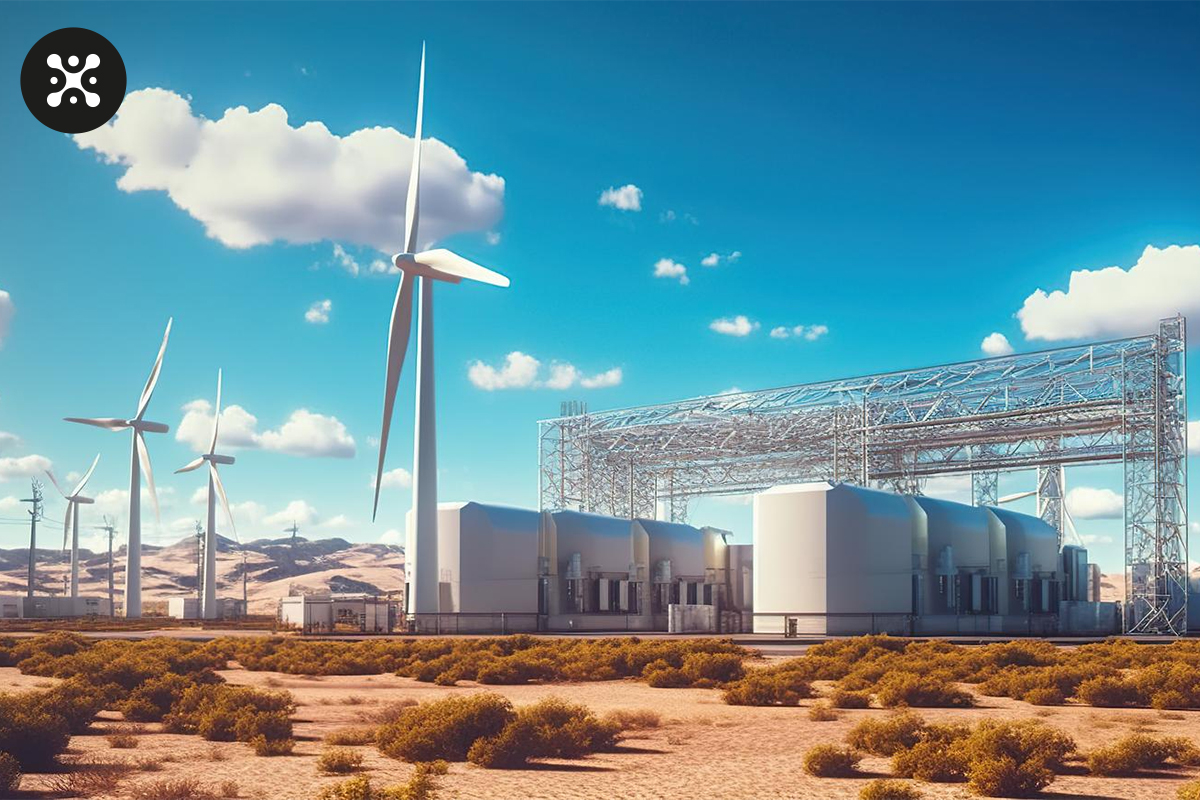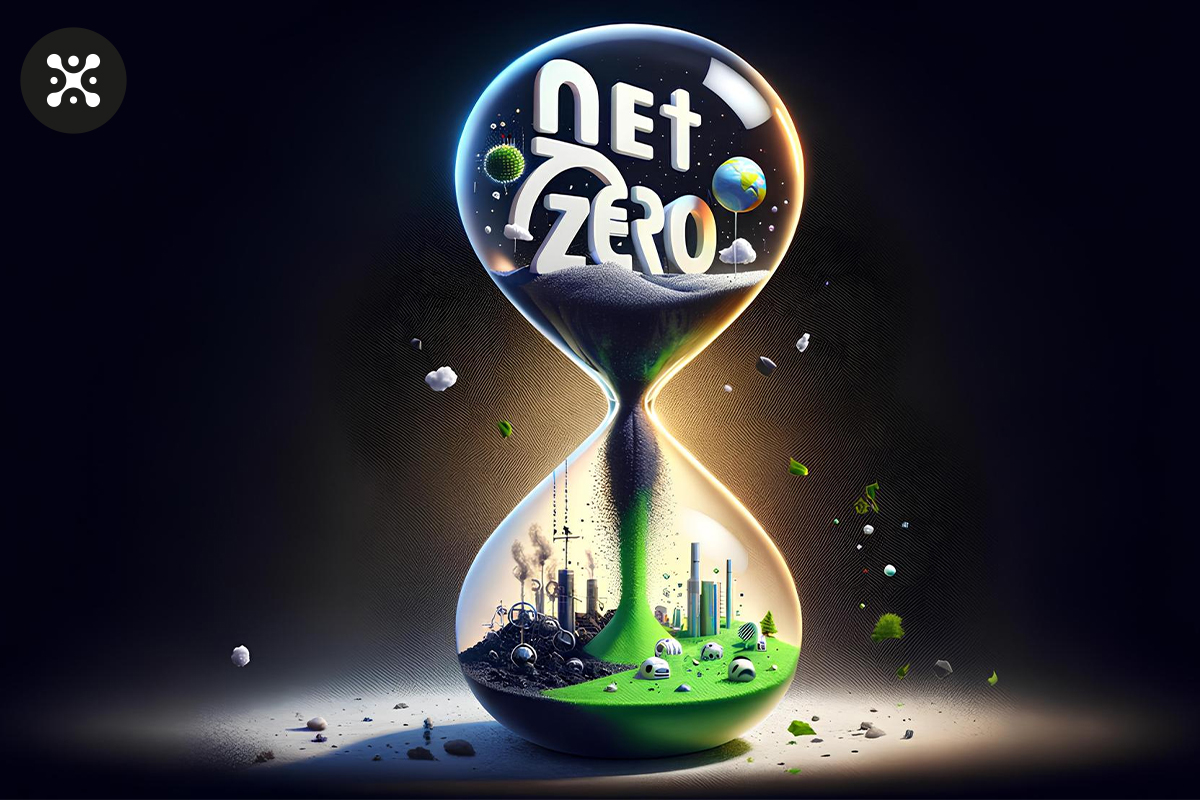You have probably already heard such a word as SUSTAINABILITY. Translated from English, it is stability. But this concept is much deeper and broader. What does it mean? We are talking about another type of sustainability — the ability to exist and develop without depleting natural resources in the future.
The United Nations (UN) practically shouts into the mouthpiece that today we have many problems with natural resources and the state of ecology as a whole. And in 2050, according to forecasts, there will be more plastic than fish in the ocean. This is if humanity does nothing. Today's problems threaten the ability of our children, grandchildren, and great-grandchildren to fully meet their needs. All natural resources simply need to be used conservatively and carefully to provide enough for future generations without reducing the current quality of life. People should be socially responsible, focusing on environmental protection and dynamic balance in human and natural systems.

Why is sustainability so important?
Sustainability has many benefits, both short-term and long-term. We will not be able to maintain our Earth's ecosystem or continue to live normally unless more drastic and considered decisions are made. If the garment factories, industrial plants, motor vehicles and other polluters of the planet do not continue to operate without change, it is likely that we will run out of fossil fuels, a huge number of animal species will die out, and the atmosphere will be irreparably damaged. Clean air and non-toxic atmospheric conditions, the growth of natural resources, high-quality and clean water - all this is necessary for the further sustainable development of the planet.
What are the 3 main "whales" of sustainable development of the planet?
The concept of sustainable development consists of three components: environmental, social and economic, also informally known as planet, people and profit.
Environmental protection is the most frequently discussed topic. Environmentalists are concerned about the amount of carbon footprint, water use, non-degradable packaging and other wasteful production processes. These processes can often be cost-effective, financially beneficial, but environmentally lethal.
Social development is a fair, responsible, ethical attitude towards employees, stakeholders and business partners. This can be achieved through more favorable benefits such as improved maternity and paternity benefits, flexible working hours and opportunities for learning and development. For example, a business must operate using a sustainable workforce that involves fairly paid adult workers working in a safe environment.
Economic development is perhaps the simplest form of sustainability. To be economically sustainable, a business must be profitable and generate enough profit to continue operating into the future. The task of this form of stability is to achieve equilibrium. Instead of making money at all costs, companies should try to make a profit in line with other elements of sustainability.
Focusing on social and environmental sustainability in addition to economic efficiency is an approach often referred to as the triple bottom line.
What are the main goals of sustainability?
Recently, the UN released the "Sustainable Development Goals" as the main goals for successfully achieving a better ecological future. They have global challenges. The 17 goals include sustainable economic growth, zero poverty, zero hunger, clean water and sanitation, affordable and clean energy, and responsible consumption and production, and are hoped to be achieved by 2030.
How does sustainable development affect business?
A "triple bottom line" approach to running a company is good for business. It is not only ethical and important to meet UN standards for environmental sustainability, it is also economical and allows for a stronger business model. In addition, sustainability enables an organization to attract employees, shareholders and customers who are invested in and share these values. Thus, the impact of sustainable development can be positive both for the company's image and for profits.
Can this be achieved?
In 2018, the EU Commission announced six key changes that need to be implemented. If properly implemented, these steps will lead to better sustainability by 2050.
Emissions of carbon dioxide, methane and other greenhouse gases that heat the planet are mostly generated in the power generation, industry, transport, construction, agriculture and land use sectors. All these and other industries need decarbonization. We will remind you that decarbonization is a measure designed to reduce greenhouse gas (GHG) emissions produced as a result of human activity.
Statistics
Today, the concentration of CO2 (carbon dioxide) in the atmosphere is 50% higher than in pre-industrial years. The amount of greenhouse gas emissions continues to grow, although not as fast as in the 2000s. In its report, the IPCC notes that in 2010-2019 the growth of emissions was 1.1% per year, while from 2000 to 2009 this figure was 2.6%. All these emissions contribute to global warming.

Act today
In 2015, many countries declared their desire to reduce emissions and combat climate change.
However, in the conclusions of the research "State of Climate Action 2022", which were published in 2022, it is written that no significant changes in the process of decarbonization have taken place. And there are processes that, on the contrary, only worsen. In particular, the following are growing:
- use of natural gas in electricity production;
- carbon dioxide emissions during steel production;
- movement by passenger cars;
- loss of mangrove forests, which are natural sinks of carbon dioxide;
- greenhouse gas emissions from agriculture.

To truly decarbonize the global economy, the share of zero-emission sources in electricity production must grow exponentially. This is possible only under the condition of urgent development of energy efficiency and abandonment of energy from fossil fuels.

Expectations & Reality: Promises & Actions
Back in 2015, at the climate talks in Paris, almost all national governments of the world committed to:
- reduce CO2 emissions by 45% from the 2010 level by 2030;
- achieve net zero CO2 emissions by 2050;
- gradually reduce emissions of other greenhouse gases.
Net zero emissions (net-zero) is a state when, after the maximum possible reduction of GHG emissions created as a result of human activity, the remaining emissions will be absorbed from the atmosphere, primarily naturally, for example, by forests or soils, or by artificial absorbers.
Scientists say that if these actions are implemented worldwide, there will be a 50% chance that the global temperature will not rise above 1.5℃.

In 2017, Sweden was the first to announce a goal to achieve net zero GHG emissions by 2045. In 2019 - France and Great Britain, but 2050 was set as the limit.
By 2050, the European Union and the United States, one of the largest polluters of greenhouse gases, Japan and South Korea sought to reach net zero.
Today, China generates the most greenhouse gas emissions. However, in September 2020, China also announced its desire to reach net zero by 2060. Ukraine, by the way, also chose this date.
Yet despite promises and aspirations, 65% of net zero targets in the corporate sector do not meet minimum reporting standards. Also, only 40% of the goals declared by the governments of the above-mentioned countries are recorded at the legislative level.
Experts and activists call GHG emission compensation projects, or offsets, another challenge. These projects allow you not to reduce your own emissions, but to purchase credits that provide for the reduction of emissions elsewhere (and this is mostly in developing countries).
Compensation projects can be aimed at reducing emissions or avoiding emissions (preserving forests); removing carbon dioxide from the atmosphere (for example, you can plant more trees). Offsets can play an important role in processes where it is impossible to reduce emissions, and the restoration of natural ecosystems - for example, forests or peatlands - has a positive effect on the planet's ecosystem.
At the same time, there is a risk of manipulation, when large industrial productions will avoid important actions to combat climate change. Therefore, compensation projects should be an add-on, and the main effort should still be directed to reducing emissions.
There are no solutions other than decarbonization
While the vast majority of countries on planet Earth are in no hurry to change for the sake of a safe environment, there are positive examples. In particular, the latest IPCC report states that 18 countries have achieved sustainable reductions in greenhouse gases over 10 years. What were they doing? The main step is decarbonization of the energy sector, improvement of energy efficiency and reduction of energy demand.
It is very important that Ukraine in the post-war period, after its Victory, also followed this path. In accordance with international agreements. In particular, this must necessarily apply to the energy sector.
Environmental actions for enterprises:
Use of renewable energy sources such as wind, hydro or solar energy. Choosing the right resource for your business can also save you money on operational costs.
Creating eco-friendly products: Avoid using harmful chemicals or materials, produce energy-efficient products, avoid single-use products, make things that can be repaired, and source parts locally, all of which are important for a more sustainable business.
Recycling and waste reduction is an easy way for businesses to become greener and reduce waste wherever possible.
Use of ecological packaging. It is better to use reusable storage options (eg glass jars) where possible and to use biodegradable packaging materials so that consumers can easily dispose of them after use.
Fleet conversion: Using electric or hybrid vehicles will significantly reduce your carbon footprint as well as reduce emissions, improve air quality and combat climate change. These vehicles can also save you money on fuel and maintenance costs, and attract environmentally conscious consumers to your brand.
Composting helps reduce the amount of waste that ends up in landfills and also creates nutrient-rich fertilizer from organic waste.
Ethical Sourcing: This business practice involves verifying where products and parts come from. By placing orders only with ethical companies that protect the environment and respect human and worker rights.
Sustainable supply chain management: This involves evaluating every aspect of your business for sustainability to reduce waste, increase efficiency, reduce pollution and improve working conditions. This covers everything from your production materials, transportation and disposal.
Employee care: A healthy business needs valued and engaged employees. A team that feels important and wants to stay and continue to develop together with you is a factor of business success and prosperity.
Corporate Social Responsibility: This involves creating programs that reach out to the local community and wider society to promote equality and inclusion, foster corporate citizenship, give back financially or through volunteering to help disadvantaged people.
What simple environmental actions can you take today?
You can bring sustainability into your own life by being a 'conscious consumer'. You can:
- do not use plastic bags for shopping,
- abandon paper documents, replacing them with electronic ones,
- avoid disposable and cheap things (we have a separate article about clothes - how to buy ecologically and where to put used clothes),
- use environmentally friendly detergents,
- reduce food waste and share things with neighbors,
- reuse some things,
- avoid giving unnecessary items.
These are just some of the practical and simple ways you can bring more sustainability into your life.
What is the role of sustainability in economic growth?
Economic growth is impossible in the long term without sustainability. Of course, it is possible to ignore environmental and sustainable development issues, but this will only lead to short-term gains. An economy that exists alongside the natural resources required for many goods and services creates a stronger long-term economic and social model. This includes taking care of water, waste, energy and food.
How does sustainability affect our health and well-being?
Our mental and physical health is inextricably linked to the surrounding natural and anthropogenic environment. Promoting sustainable development helps create better conditions in which we can thrive, while conserving resources for future generations so that people can enjoy social justice and a high quality of life in the future.
To be sustainable, that is, to treat the natural resources that the planet Earth gives us sparingly and ecologically - this should now become an absolute trend. After all, the "tomorrow" of our children depends on us "today". Think about it. And if the thought sneaks up on someone: "What can I do on my own?", then this is a false thought. Because you can become an example for a neighbor, and he - for another neighbor. And that's how the endless chain works. Not leaving trash after a picnic is a step forward. It is always worth starting with yourself, and then with small but powerful steps we will change the world!
Our Dubhumans team is already trying every day to keep up with the times and start eco-trends! In the following articles we will talk about our steps!


































